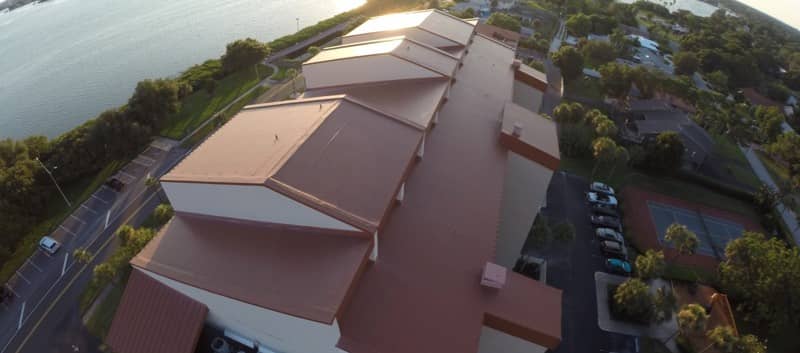 When it comes to the root cause of many roof system failures, improper design, using the wrong materials, and poor quality installation are common culprits. Yes - the elements can cause leaks and lead to breakdowns, but ask yourself this, are you using the right roofing system for your building to begin with?
When it comes to the root cause of many roof system failures, improper design, using the wrong materials, and poor quality installation are common culprits. Yes - the elements can cause leaks and lead to breakdowns, but ask yourself this, are you using the right roofing system for your building to begin with?
1. Improper Design
When a roof is initially designed, the specification is typically the best solution for the building to meet the owner’s needs and expectations. Once this step is complete and quotes for the work come in, we often see cuts or revisions to the specification in order to reduce costs, often described as value engineering.
Value engineering generally involves determining where changes in the specification will have the largest impact on overall cost reduction while minimizing the impact on the owners needs and expectations. However, these changes do impact and diminish the roof system performance criteria, and usually more-so than building owners realize.
These actions are often rationalized in two ways:
- If something fails, the owner thinks the warranty will cover whatever happens because that’s what the warranty is for and,
- The assumption that the building is getting a new roof, so everything will be fine.
However, typically neither of those factors are true and can lead to serious costs for the building owner in the long run. In order to make sure that you are getting the proper design, confer with the initial designer or the membrane manufacturer to find out if your roof is going to perform as expected.
2. Use of the Wrong Materials
Regardless of the initial price of a roof, it is common for a building owner to experience sticker shock, as a roof is a hefty investment even without adding the membrane. This price shock can then lead to your ‘best-fit’ solution being thrown out of the window in favor of a cheaper alternative.
For example, say the building in question is a restaurant. As the owner, you want to make sure that the membrane you purchase is able to withstand all of the kitchen exhaust (grease) that will accumulate from daily operations. Originally, the spec recommends a KEE membrane because of its ability to withstand grease. Instead, you choose an EPDM membrane because it is cheaper and to you, it could be just as good if the grease is expected to be controlled via exhaust grease traps (a maintenance item). Well other factors can affect the performance, and your roof is likely to experience problems because the material wasn’t chosen with the application in mind.
Minimize this risk by considering all of the threats your roof must withstand and if the cheaper product can really hold up the way you need it to.
3. Improper Installation
No one goes out to install a roof wrong or with poor quality. However, that doesn’t mean it doesn’t happen. During the installation of a roof, the contractors are constantly fighting the elements. Temperature, wind, and precipitation during roof installation can cause serious long-term problems for building owners if the contractors are not being extra careful in fabricating roof membrane seams.
Installing a roof is not a one day process; it has to be made watertight every night in a manner that protects it from any threats. Just like in any job, towards the end of the day people are rushing to finish assignments and things can get overlooked, in this case, maybe a seam is left open. If it rains during the night, there is now water in the building that will be trapped between the roof and the building slowing breaking down the structure.
Accidents happen. However, building owners need to be vigilant during inspections to make sure that everything is installed the way the manufacturer said it needed to be.
By taking the right precautions and not cutting corners, a roof can last anywhere from 10 to 30 years depending on the membrane being used. Weigh your options carefully as a higher initial cost could save you money in the long-term. How do you ensure that you are choosing a system that won’t fail? Share with us in the comments.
-1.png?width=500&height=271&name=FiberTite_Only%20(500px%20wide)-1.png)


-1.png)